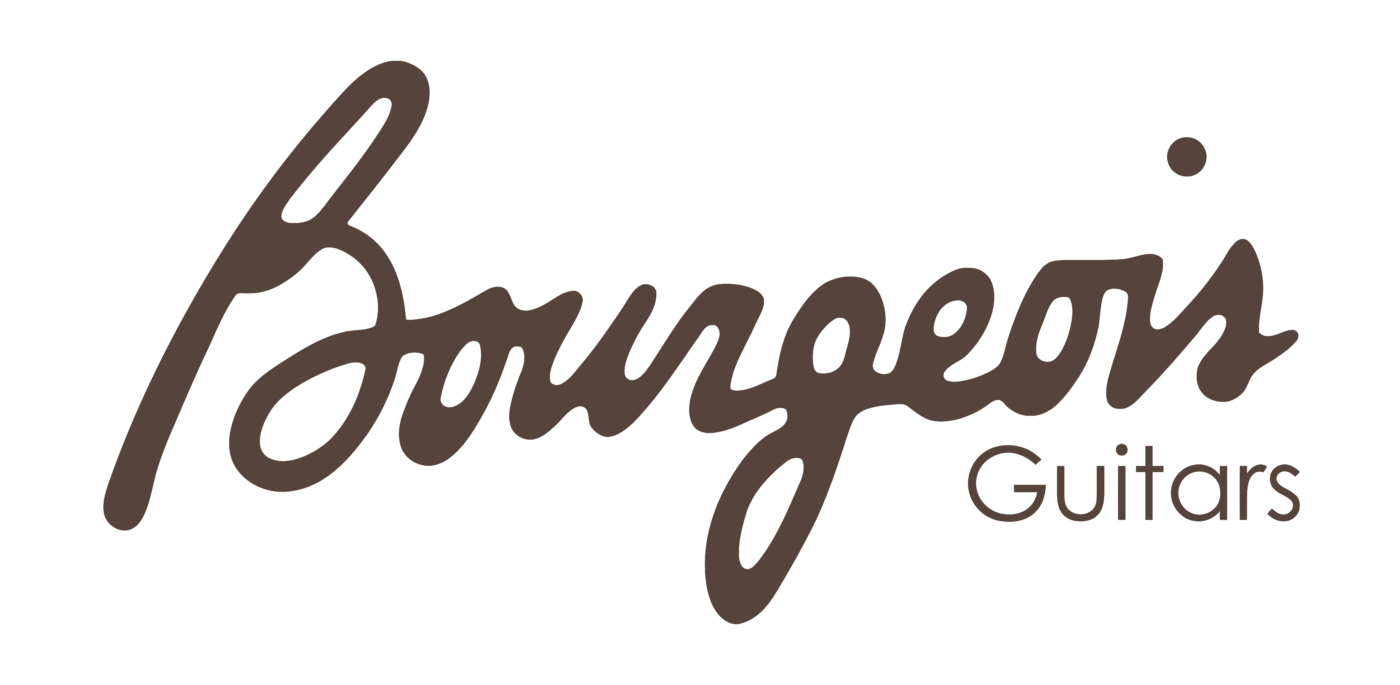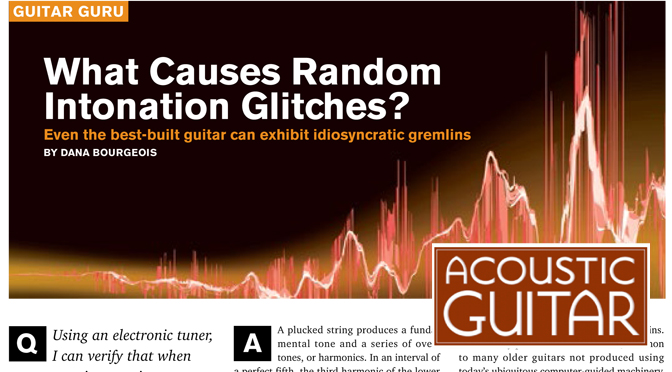Guitar Guru
Guitar Guru – Intonation
Dana Bourgeois contributes the monthly Guitar Guru column to Acoustic Guitar Magazine. If you a question you’d like Dana to address in an upcoming article, please submit it to [email protected].
Download a PDF of this article here
Q: Using an electronic tuner, I can verify that when my open strings are in tune, my fretted octaves are accurate or nearly accurate. Individual notes of certain chords, however, can be very out of tune, and capoing in some positions requires retuning. I’ve noticed that all guitars, even electrics with ‘properly’ adjusted saddles, have the same intonation problems to a greater or lesser degree. Can you explain what causes seemingly random intonation glitches? Is it possible to modify a guitar to intonate as accurately as a keyboard?” Alex Medford Somerville, Massachusetts
A: A plucked string produces a fundamental tone and a series of overtones, or harmonics. In an interval of a perfect fifth, the third harmonic of the lower fundamental and the second harmonic of the upper fundamental are the same pitch. When significant harmonics of two notes are perfectly in tune, the interval is said to be just, or consonant. By virtue of shared harmonics, the easiest intervals to hear as consonant or “out of tune” are unisons and octaves, followed by perfect fifths and perfect fourths. A consonant perfect fourth above a consonant perfect fifth produces a pitch slightly higher than an octave above the original note. This phenomenon (difficult to succinctly explain) presents serious problems for instruments capable of playing multiple, simultaneous notes.
If you demand consonant octaves, something has to give. Guitars and pianos solve this problem by dividing consonant octaves into 12 equally spaced semitones. This tuning system, known as equal temperament, allows instruments to play in all keys with reasonable intonation. The downside is that every interval except the octave is either flat or sharp relative to its harmonically consonant counterpart.
Every interval, except the octave.
So the good news is that guitars do, in fact, intonate about as accurately as pianos, though not without idiosyncratic intonation gremlins. Inaccurately placed frets and saddles, common to many older guitars not produced using today’s ubiquitous computer-guided machinery, can further skew the baked-in imperfection of equal-temperament fret spacing. Fret, saddle, and string wear can wreak havoc on even the most accurately manufactured instrument, while dryness or humidity can raise or lower a soundboard (and with it, strings), altering intonation from one day to the next. And players may have a tendency to push strings sideways when fretting certain chords, inadvertently seasoning the harmonic soup.
Yet guitars have distinct intonation advantages. By making subtle, even unconscious adjustments in tuning and inflection, squeezing a chord a certain way, sliding up on a pivotal note, or simply refraining from bad technique, a good player’s intonation always seems dead on. Andrés Segovia is said to have preferred high action (the better to manipulate intonation), eschewed compensated saddles, and advised students that tuning to the unique requirements of an individual piece of music is a fundamental aspect of musical interpretation.
Before succumbing to keyboard envy, always remember that no pianist can manipulate intonation with the left hand.

